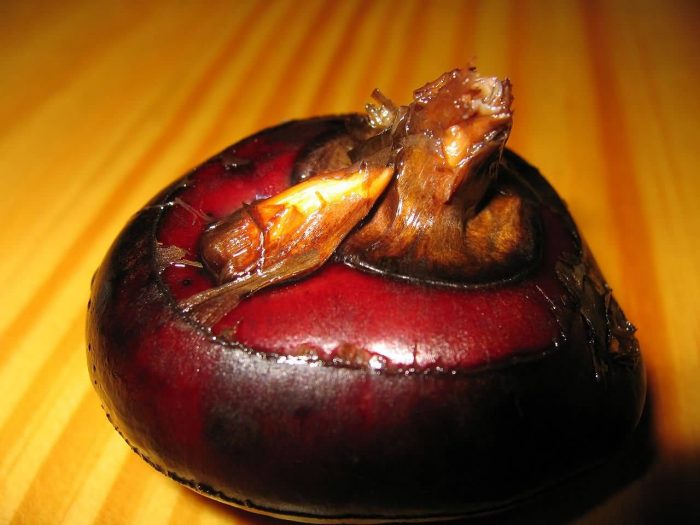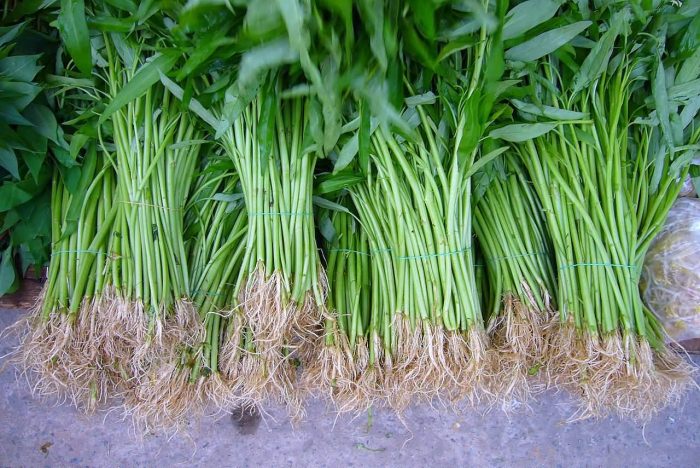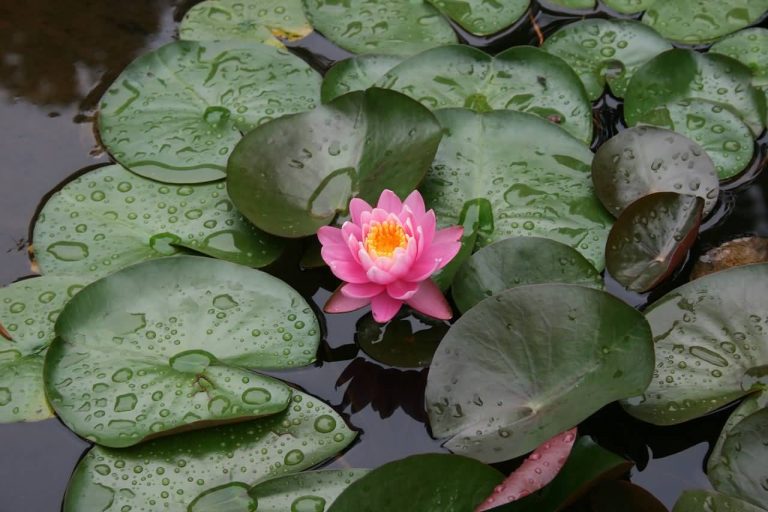Aquatic plants are plants that have adapted to living in aquatic environments (saltwater or freshwater). They are also referred to as hydrophytes or macrophytes. These plants require special adaptations for living submerged in water, or at the water’s surface. Find below the list of some aquatic plants.
1. Lotus
Lotus is one of two species of aquatic plant. It is native to Tropical Asia and Queensland, Australia. It is commonly cultivated in water gardens. It is also the national flower of India and Vietnam. The roots of lotus are planted in the soil of the pond or river bottom, while the leaves float on top of the water surface or are held well above it. The flowers are usually found on thick stems rising several centimeters above the leaves.
The plant normally grows up to a height of about 150 cm and a horizontal spread of up to 3 meters. An individual lotus can live for over a thousand years. The flowers, seeds, young leaves, and roots are all edible. In Asia, the petals are sometimes used for garnish, while the large leaves are used as a wrap for food. In South Indian states, the Lotus Stem is sliced, marinated with salt to dry and the dried slices are fried and used as a side dish.

Loren Kerns /CC BY 2.0 | Lotus Root Slices
2. Wild Rice
Wild rice are four species of grasses and the grain that can be harvested from them. The grain was historically gathered and eaten in both North America and China. It is also called as Canada rice, Indian rice and water oats. Wild rice grains have a chewy outer sheath with a tender inner grain that has a slightly vegetal taste. The plants grow in shallow water in small lakes and slow-flowing streams, often, only the flowering head of wild rice rises above the water. The grain is eaten by dabbling ducks and other aquatic wildlife as well as humans.
Typically sold as a dried whole grain, wild rice is high in protein, the amino acid lysine and dietary fiber and low in fat. Nutritional analysis shows wild rice to be second only to oats in protein content per 100 calories. It is also a good source of certain minerals and B vitamins. Wild rice seeds can be infected by the highly toxic fungus ergot, which is dangerous if eaten. Because of its nutritional value and taste, wild rice increased in popularity in the late 20th century and commercial cultivation began in the US and Canada to supply the increased demand. Wild rice is also grown as an ornamental plant in garden ponds.

ElinorD /CC BY-SA 3.0 | Cooked Wild Rice
3. Water Caltrop
The water caltrop is any of three extant species. The species are floating annual aquatic plants, growing in slow-moving water up to 5 meters deep, native to warm temperate parts of Eurasia and Africa. The plant is also called as water chestnut, buffalo nut, bat nut, devil pod, ling nut and singhara. They bear ornately shaped fruits. Each fruit contains a single very large starchy seed. In India and Pakistan it is known as singhara or paniphal and is widely cultivated in fresh water lakes.
The fruits are eaten raw or boiled. When the fruit has been dried, it is ground to a flour called singhare ka atta. Singhare ka atta is used in many religious rituals and can be consumed as a phalahar diet on the Hindu fasting days, the navratas. Water caltrop has been an important food for worship as prayer offerings since the Chinese Zhou Dynasty. The Chinese Herbal Medicine Summary indicates that water caltrop can help fever and drunkenness.

TheDarkCurrent /CC BY-SA 3.0 | Water Caltrop Seeds
4. Water Chestnut
The Water chestnut or Chinese water chestnut is a grass-like sedge native to Asia, Australia, tropical Africa and various islands of the Pacific and Indian Oceans. It is widely grown in many countries for its edible corms. The water chestnut is actually not a nut at all, but an aquatic vegetable that grows in marshes, underwater in the mud. It has tube-shaped, leafless green stems that grow to about 1.5 metres. The small, rounded corms have a crisp white flesh and can be eaten raw, slightly boiled or grilled, and are often pickled or tinned.
They are a popular ingredient in Chinese dishes. In China, they are most often eaten raw, sometimes sweetened. Raw water chestnuts are slightly sweet and very crunchy. Boiled water chestnuts have a firm and slightly crunchy texture with a flavor that is very mild and slightly nutty. Water chestnuts are often combined with bamboo shoots, coriander, ginger, sesame oil and snow peas. They are often used in noodle or rice dishes.

Joscha Feth /Public Domain | Water Chestnut Corm
5. Water Spinach
Water spinach is a semiaquatic, tropical plant grown as a vegetable for its tender shoots and leaves. It is found throughout the tropical and subtropical regions of the world. This plant is known as river spinach, water morning glory, water convolvulus, Chinese spinach, Chinese Watercress, Chinese convolvulus, swamp cabbage or kangkong.
Water spinach grows in water or on moist soil. Its stems are 2–3 metres or more long, rooting at the nodes and they are hollow and can float. The leaves are arrow head-shaped 5–15 cm long and 2–8 cm broad. The Water Spinach is a common ingredient in Southeast Asian dishes. Stir-fried water spinach is a popular vegetable dish in Southeast Asia.

Eric in SF /CC BY-SA 4.0 | Water Spinach
6. Watercress
Watercress is an aquatic plant species with the botanical name Nasturtium officinale. Watercress is a rapidly growing, aquatic or semi-aquatic, perennial plant native to Europe and Asia and one of the oldest known leaf vegetables consumed by humans. The hollow stems of watercress are floating and the leaves are pinnately compound. Small, white and green flowers are produced in clusters.
In some regions, watercress is regarded as a weed, in other regions as an aquatic vegetable or herb. Watercress has been grown in many locations around the world. Watercress contains significant amounts of iron, calcium, iodine, manganese and folic acid. Because it is relatively rich in vitamin C, watercress was suggested by English military surgeon John Woodall (1570–1643) as a remedy for scurvy.

Wendell Smith /CC BY 2.0 | Watercress With Flowers



Connect with us